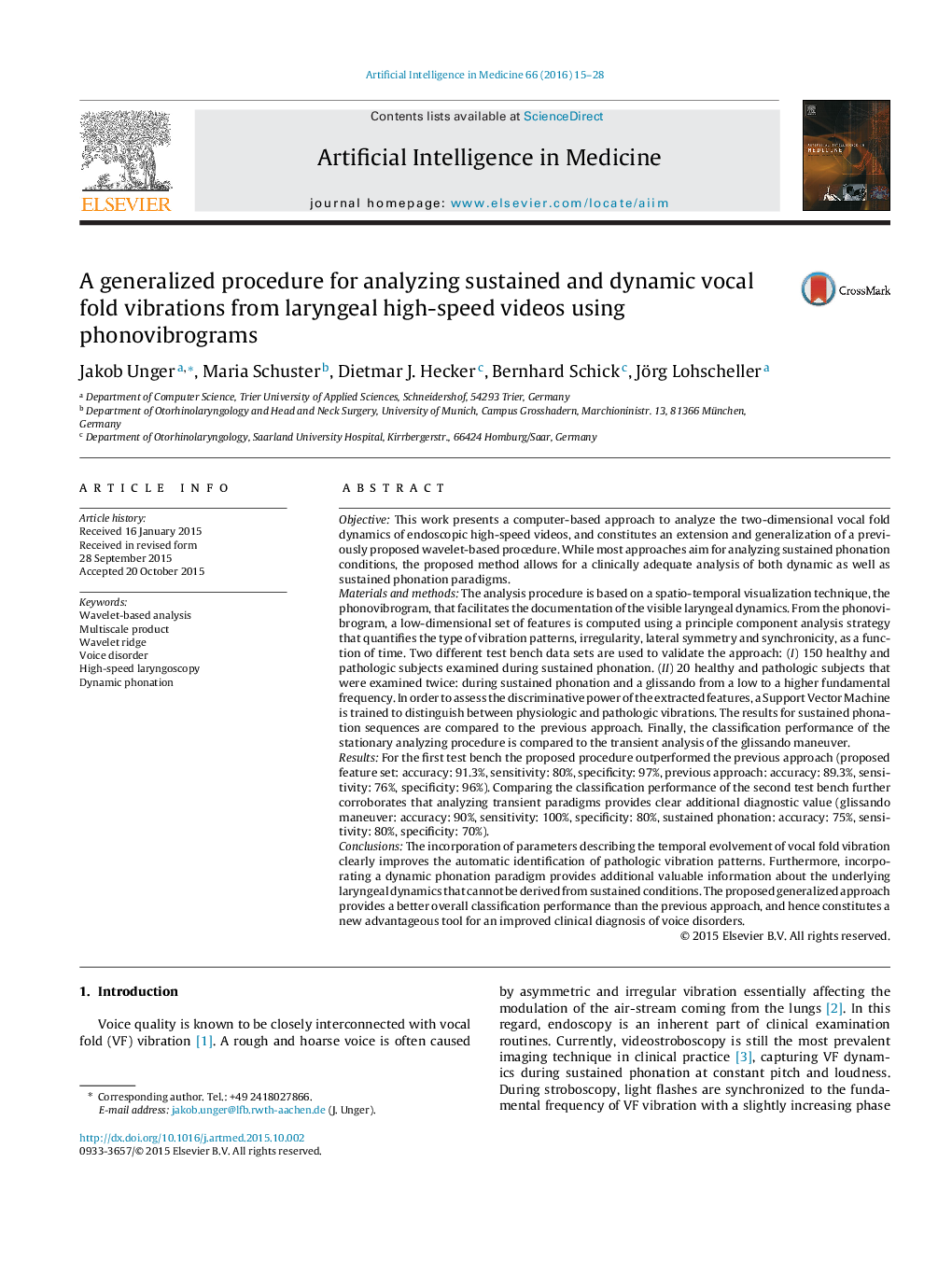| کد مقاله | کد نشریه | سال انتشار | مقاله انگلیسی | نسخه تمام متن |
|---|---|---|---|---|
| 377575 | 658796 | 2016 | 14 صفحه PDF | دانلود رایگان |
• Generalization of a previously published method to analyze vocal fold dynamics.
• Analyzing sustained and dynamic phonation conditions.
• 190 laryngeal high-speed video recordings were analyzed in this study.
• 184,993 segmented video frames were considered in total.
• Features of dynamic phonation were found to provide a high discriminative power.
ObjectiveThis work presents a computer-based approach to analyze the two-dimensional vocal fold dynamics of endoscopic high-speed videos, and constitutes an extension and generalization of a previously proposed wavelet-based procedure. While most approaches aim for analyzing sustained phonation conditions, the proposed method allows for a clinically adequate analysis of both dynamic as well as sustained phonation paradigms.Materials and methodsThe analysis procedure is based on a spatio-temporal visualization technique, the phonovibrogram, that facilitates the documentation of the visible laryngeal dynamics. From the phonovibrogram, a low-dimensional set of features is computed using a principle component analysis strategy that quantifies the type of vibration patterns, irregularity, lateral symmetry and synchronicity, as a function of time. Two different test bench data sets are used to validate the approach: (I) 150 healthy and pathologic subjects examined during sustained phonation. (II) 20 healthy and pathologic subjects that were examined twice: during sustained phonation and a glissando from a low to a higher fundamental frequency. In order to assess the discriminative power of the extracted features, a Support Vector Machine is trained to distinguish between physiologic and pathologic vibrations. The results for sustained phonation sequences are compared to the previous approach. Finally, the classification performance of the stationary analyzing procedure is compared to the transient analysis of the glissando maneuver.ResultsFor the first test bench the proposed procedure outperformed the previous approach (proposed feature set: accuracy: 91.3%, sensitivity: 80%, specificity: 97%, previous approach: accuracy: 89.3%, sensitivity: 76%, specificity: 96%). Comparing the classification performance of the second test bench further corroborates that analyzing transient paradigms provides clear additional diagnostic value (glissando maneuver: accuracy: 90%, sensitivity: 100%, specificity: 80%, sustained phonation: accuracy: 75%, sensitivity: 80%, specificity: 70%).ConclusionsThe incorporation of parameters describing the temporal evolvement of vocal fold vibration clearly improves the automatic identification of pathologic vibration patterns. Furthermore, incorporating a dynamic phonation paradigm provides additional valuable information about the underlying laryngeal dynamics that cannot be derived from sustained conditions. The proposed generalized approach provides a better overall classification performance than the previous approach, and hence constitutes a new advantageous tool for an improved clinical diagnosis of voice disorders.
Journal: Artificial Intelligence in Medicine - Volume 66, January 2016, Pages 15–28
